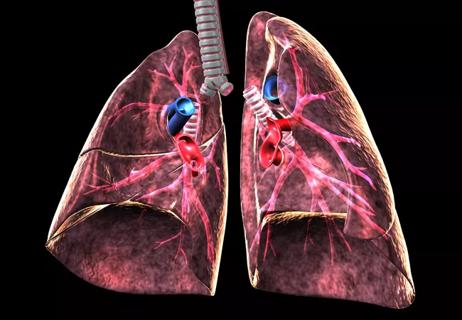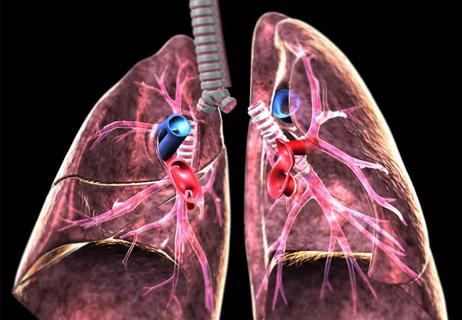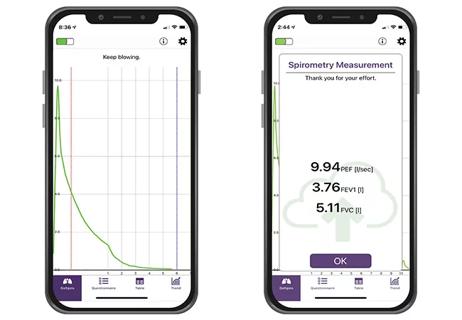Changes to criteria would bring some patients closer to receiving a lung transplant

By Carli Lehr, MD, MS and Maryam Valapour, MD, MPP
Cleveland Clinic is a non-profit academic medical center. Advertising on our site helps support our mission. We do not endorse non-Cleveland Clinic products or services. Policy
In 2018, over 2,500 patients with end-stage lung disease received a lifesaving lung transplant. Clinicians in the U.S. use a standardized system to prioritize the sickest candidates for lung transplant. However, our analysis reveals that patients with cystic fibrosis (CF) and chronic obstructive pulmonary disease (COPD) experience barriers to access based on the exclusion of critical data points, which may impact their candidacy for transplant. CF affects more than 30,000 people in the U.S. and almost all CF patients eventually die of respiratory failure, making transplant a critical intervention strategy.
In the U.S., patients gain access to lung transplant through the Lung Allocation Score (LAS) system. The LAS, first implemented in 2005, generates a composite score that ranks patients based on 1) their risk of death without a transplant and 2) their chance of survival with a transplant. The model has undergone relatively few changes since its inception. Patients are categorized into one of the following diagnosis groups:
The variables used to derive this score are collected by the Scientific Registry of Transplant Recipients (SRTR), which provides comprehensive data on transplant donors, candidates and recipients in the U.S. However, some important variables relating to patients with CF are not included in this registry.
Our team merged the SRTR with the Cystic Fibrosis Foundation Patient Registry (CFFPR) to evaluate transplant candidates and recipients from 2011-2014. This included 9,043 patients on the lung transplant waiting list and 6,110 lung transplant recipients. Of these, 1,020 and 677, respectively, had CF.
Individuals with CF who are sick enough to need a lung transplant have significant heterogeneity in survival. In this work, we identified new clinical variables using the merged registry that were found to best predict their risk of mortality as they awaited a transplant.
Their LAS was recalculated using these variables. Additionally, the forced expiratory volume in one second (FEV1) is known to be an important predictor of survival not only in CF patients but also in patients with other chronic lung diseases. The impact of change in FEV1 was reassessed for patients in all diagnosis groups awaiting a lung transplant.
The risk of death on the waiting list was increased for CF candidates with the following clinical variables: infection caused by Burkholderia species (HR 2.8, 95% CI 1.2-6.6), hospitalization 29-42 days prior to the transplant (2.8, 1.3-5.9), massive hemoptysis (2.1, 1.1-3.9), and a relative drop in FEV1 ≥ 30% over 12 months (1.7, 1.0-2.8). Their posttransplant mortality risk was increased for those with pulmonary exacerbation time of 15-28 days (1.8, 1.1-2.9). The inclusion of the FEV1 variable also predicted mortality for COPD candidates with a relative drop in FEV1 of ≥ 10% while they awaited a transplant (2.6, 1.2-5.4).
The addition of CF-specific variables improved the ability of the LAS to identify the sickest CF candidates, which gave them better access to a transplant. Importantly, in the population studied, more patients who died awaiting transplant would have experienced an increase in their score. For candidates with COPD, the addition of the FEV1 variable increased their access to transplant.
The LAS is scored from 0-100, with the majority of candidates falling between a score of 35-57 points at the time of transplant. For illustrative purposes, the score of an “average” CF candidate awaiting transplant, with the addition of the Burkholderia variable, would increase about six points. The addition of the hospitalization variable would increase their score by six points, 3.75 points for hemoptysis, and 2.5 points for a relative decrease in FEV1 of ≥30%. Candidates with COPD would experience an increase in score between two to four points with the inclusion of the variable indicating a relative drop in FEV1 of ≥ 10%. Currently, candidates with CF and COPD have the lowest average LAS at the time of transplant, and the increases in scores may also significantly increase their likelihood of receiving a transplant.
The goal of the LAS is to allocate organs to those at the highest risk of death who are more likely to experience a survival benefit with transplant. This work shows that the addition of new clinical variables can help improve the predictive ability of the LAS model to provide more accurate predictions of those most at risk for mortality on the transplant waiting list. It also highlights the importance of longitudinal patient registries to help identify the patients who may benefit the most from medical intervention to improve survival.
This study was published in the American Journal of Respiratory and Critical Care Medicine, and was made possible with the support of the U.S. Department of Health and Human Services.
Drs. Lehr and Valapour are lung transplant pulmonologists in Cleveland Clinic’s Respiratory Institute. Dr. Valapour is also Director of Lung Transplant Outcomes in Cleveland Clinic’s Respiratory Institute and Senior Lung Transplant Investigator for the Scientific Registry of Transplant Recipients.

Cleveland Clinic pulmonologists aim to further lower waitlist times and patient mortality

New research aims to improve suboptimal lung transplant outcomes by “looking beyond the walls of hospitals”

Data indicates transplant outcome disparities exist, but thoughtful planning is needed to address the problem

Counseling before and after transplantation can help patients navigate the balance between safety and practicality

Multisystem diseases require multi-disciplinary approach for the best care

Criteria reflect a rethinking of some contraindications

Mobile app designed to improve access to lung transplant and reduce waitlist mortality

New risk-modeling approach to use microsimulations, incorporating day-to-day changes in patients